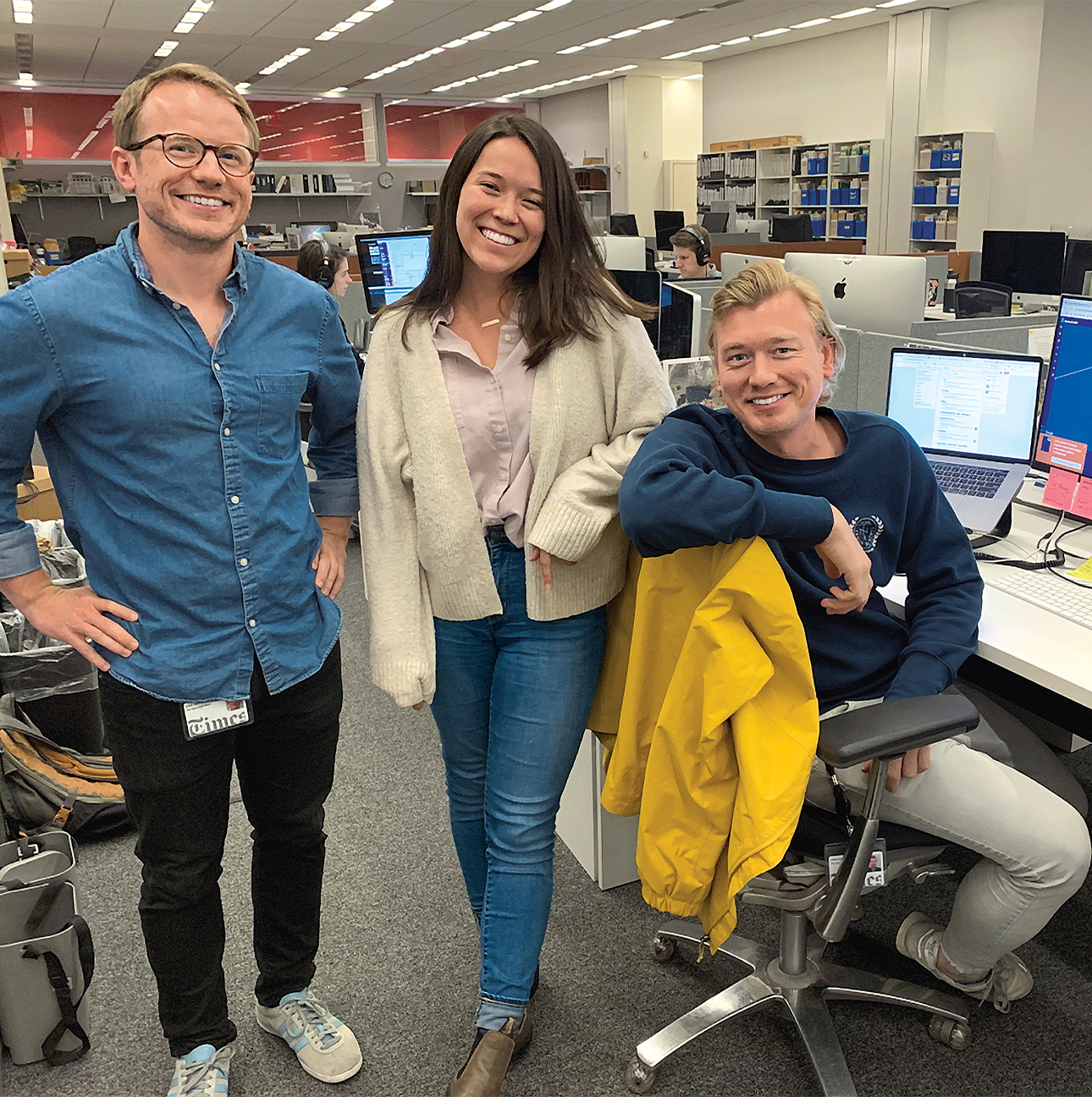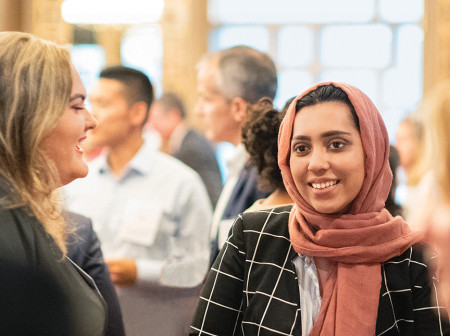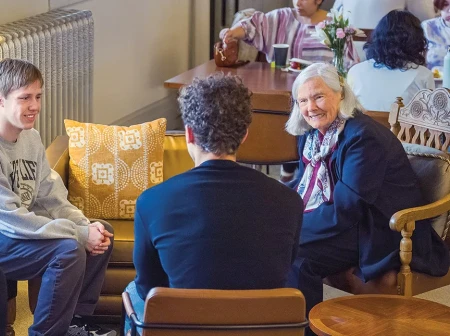New York Times reporter Evan Hill ’07 doesn’t walk around carrying a pen and a notepad to do his job. Instead, he oscillates between various other tools, all within the frame of his computer monitor, that enable him to pinpoint the location of a Russian airstrike in Syria or identify culprits behind the Jan. 6 insurrection at the U.S. Capitol.
Hill, a Medill School of Journalism, Media, Integrated Marketing Communications alumnus, is part of the New York Times’ Visual Investigations team. Members of the team are pioneering a new form of reporting, often referred to as open-source journalism, that takes advantage of the incalculable amounts of data that turn up online every day. Journalists then collect this evidence and blend together disparate elements to tell a broader story.
“Since the Arab Spring uprisings in 2011, the web has opened up a whole new era of information that gives us the power to do newsgathering in previously unimaginable ways,” Hill says.
This mode of reporting is now enhanced by tools some of which were the domain of military and intelligence agencies, such as satellite imagery. As these tools are becoming more commercially available, reporters are now able to look up recent satellite images to see, for example, whether a change in terrain could prove that an airstrike had occurred.
In 2020 the Visual Investigations team won a Pulitzer Prize for International Reporting for exposing that Russian pilots had bombed hospitals in Syria.
“It was common knowledge that the Russians and [Syria’s president] Bashar Assad were bombing hospitals in rebel-held parts of Syria,” Hill recalls. “But the hard evidence … wasn’t really there.”
To investigate these bombings, Hill and his team analyzed Russian air force radio traffic, as well as photographs and video footage obtained from on the ground in Syria. Soon, they found a pattern showing the Russians intentionally targeted hospitals.
“Each time you hear [the dispatcher] say ‘777,’ you hear the pilot say, ‘I sent it,’ ” Hill says. “We then matched that with reports of strikes in the area, and each time, ‘777’ meant a strike had occurred.”
Hill says that while these new tools are undoubtedly helpful, he still adheres to the core tenets of good reporting, for which he credits his Northwestern education.
“The foundational classes I took at Medill in newswriting and editing were absolutely critical,” Hill says. “The notorious ‘Medill F’ drilled into us that no matter what you do, you have to be factual, and you have to be accurate.”
The path to international reporting
Hill first visited the Middle East in 2005 as a study abroad student to learn Arabic at the American University in Cairo.
“I loved it, and I told myself I will be back,” he says.
That was four years after the 9/11 terrorist attacks and two years after the Iraq War began.
In the winter quarter of 2006, he took a class called Reporting the Arab and Muslim Worlds, taught by Marda Dunsky, then a Medill assistant professor who had worked as an editor on the national-foreign news desk of the Chicago Tribune and as an Arab affairs reporter for the Jerusalem Post. That class motivated him to change the way reporting about the Middle East was done.
“In a way, I think the problematic coverage of the region may have contributed to the Iraq War, and this class instilled in me the idea that we should never let this happen again,” he says.
Hill’s foray into international reporting started at a time when U.S. newsrooms were tightening resources to cover news from overseas. But he didn’t budge. In 2009 he started a blog with his Northwestern peer Gregg Carlstrom ’07 (now a reporter for the Economist) focused on the Middle East. In 2010 their work caught the attention of a senior editor at Al Jazeera English who hired them to cover the region from Doha, the capital of Qatar. Before arriving at the New York Times in 2019, Hill also reported for the Times of London and researched human rights abuses for Human Rights Watch.
Throughout his reporting, Hill says that journalism always had one clear goal for him.
“Regardless of the tools you use,” he says, “your mission is to hold the powerful to account.”
Mohamed Abdelfattah is global editor in the Office of Global Marketing and Communications.
This story has been updated to reflect the correct name of Marda Dunsky's course and to accurately describe her journalism experience prior to joining the Medill faculty. Northwestern Magazine regrets the errors.




Reader Responses
No one has commented on this page yet.
Submit a Response